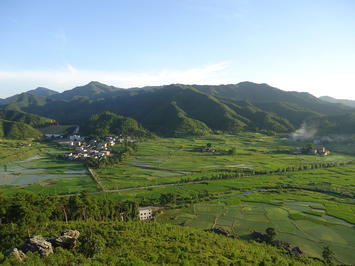
Another period of singing the virtues of Chinese Communist Party (CCP) direction seems upon us, at least when it comes to steering an economy. Just as after the Great Recession of 2008-9, China’s rebound from the Coronavirus Covid-19 has led the world. Of course, the official statistics always bear scrutiny, and public debt levels probably lend a false note to stimulus measures. But a 4.9% growth rate in third-quarter GDP looked great.
A component of China’s recent economic and social gains has been a bolstering of rural areas, until recent decades the essence of national life but lagging since. A November report in the Wall Street Journal fleshed out the emphasis that Xi Jinping’s regime has placed on this effort. He wants to eradicate extreme poverty in the countryside by the 100th anniversary of the CCP next year. The plan involves creating job opportunities in the hinterlands rather than having peasants flock to major cities.
Separately, a few Chinese agricultural village projects drew notice from curators of an expansive rural-life exhibit this year at the reopened Guggenheim Museum in New York. The premise of the show, spearheaded by the celebrated Dutch architect Rem Koolhaas, is the reinvention of country life to restore its traditional appeal while addressing civic and environmental imperatives. (It is scheduled to close by Feb. 15, 2021.)
While noting the checkered history of state- and privately driven back-to-the-farm initiatives over the centuries—including the CCP’s horrid Great Leap Forward under Mao Zedong—the Guggenheim exhibitors draw a mostly hopeful portrait of recent rural experiments on the mainland.
Working with a study group from the Chinese Academy of Fine Arts, Koolhaus protégé Stephan Petermann takes us through a “Taobao village” that grew out of a bed furniture-making hub, becoming one of the regionally dispersed manufacturing centers of the huge Alibaba online market for buyers and suppliers. The idea is to use modern Chinese commerce to reinvigorate local economies such as this one in Jiangsu Province. Elsewhere, we see, sleepy backwaters are transformed into enticing cultural tourism draws for China’s urban masses, while at the same time the sprucing up makes the inhabitants’ digs more livable.
Read the rest of this piece at timwferguson.com.
Tim W. Ferguson, the former editor of Forbes’s Asia edition, writes about business, economics and society.
Photo credit: The New Citizen of China via Wikimedia under CC 3.0 License.












